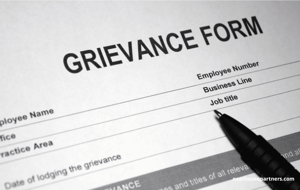Redundancy Protection for Pregnant Women and New Parents (Employment Rights Bill)
Learn about enhanced redundancy protections for pregnant women and new parents, ensuring job security and support during critical family-related leave periods.
Rachel Ameobi
Rachel is a qualified solicitor with a BA in Criminology, a Graduate Diploma in Law, the LPC, and a Masters in Law. With extensive experience in Employment Litigation and Personal Injury, Rachel has advised respondents and drafted complex legal documents, developing a strong foundation in contentious and non-contentious matters.Date
21 July 2025Updated
21 July 2025
Table of contents
Related articles
Tags
Redundancy Protection for Pregnant Women and New Parents
The Equality Act 2010 sets out the period of time in which an employee who is pregnant or on maternity leave is explicitly protected from discrimination. This is known as the ‘protected period’. Previously, that period ran from the beginning of the pregnancy until the employee had returned to work from maternity leave, or two weeks after the date the child was born, if the employee was not entitled to maternity leave. As of 6th April 2024, the redundancy protected period was extended to run from the date the employee informs their employer of their pregnancy and ends 18 months from the date the baby was born; or 18 months from the expected week of childbirth if the employee does not inform the employer the exact date the baby was born. If the employee is subject to any less favourable treatment that arises from her pregnancy, any pregnancy related illness, being on maternity leave or seeking to take maternity leave, she will be entitled to bring a claim for pregnancy & maternity discrimination.
Regulation 10 of Maternity and Parental Leave Etc Regulations 1999 (MAPLE) sets out the existing procedure which must be adopted by employers if they have an employee in the protected period whose role is at risk of redundancy. Essentially, during the redundancy consultation, employees in the protected period must be offered a suitable alternative role as a priority over other employees at risk. The employer must also ensure that the alternative vacancy does not put the employee on substantially less favourable terms as her previous role; taking terms such as pay, location and seniority into consideration. The objective of Regulation 10 is to prevent employers from offering employees who are pregnant or on maternity leave redundancy first.
When Does the Redundancy Protected Period Start and End for Pregnant Employees?
In practical terms, the redundancy protected periods can be summarised as follows:
Before Taking Family Related Leave
From the moment the employee notifies her employer of her pregnancy the protected period begins.
If the employee intends to take adoption or shared parental leave, the protected period begins on the day the adoption or shared parental leave begins.
If the employee’s role is at risk of redundancy during this period, the employer must offer the employee suitable alternative roles as a priority over other employees at risk of redundancy.
During the Period of Family Related Leave
Once the employee’s period of family related leave has commenced, they continue to benefit from the redundancy protected period, as explained above.
Returning to Work From Maternity Leave
If the employee is returning from maternity leave, the redundancy protected period will continue for 18 months from the date the child was born, or from the expected week of childbirth if the employee does not inform her employer of the child’s exact date of birth.
If the employee is returning to work from adoption leave, the redundancy protected period will end 18 months from the date the adoption placement started or the date the child enters England, Scotland or Wales if it is an overseas adoption.
Regarding employees taking shared parental leave, the end of the redundancy protected period depends on how they have chosen to take their leave:
- If the employee takes less than six weeks of continuous leave, the redundancy protected period ends on the last day of that block of leave.
- If the employee takes six or more weeks of continuous leave, the redundancy protection period ends 18 months from the date the child was born.
- If the employee takes discontinuous leave the redundancy protection period ends at the end of each period of shared parental leave.
Once the redundancy protected period has ended, standard employment protections will still apply. It is therefore still unlawful to discriminate against an employee for pregnancy, maternity or any other type of family leave, even after the protected period has ended.
What Happens If You Get
Maternity Leave Protection
Wrong As an Employer?
If an employee within the protected period is dismissed (for any reason that is related to them being pregnant, taking or planning to take a form of family related leave) the dismissal will be automatically unfair. Meaning it does not matter if they have less than two years service, they will still be entitled to bring a claim.
If the employee is pregnant, taking or planning to take maternity leave and she is subject to any less favourable treatment at all, she will also have a discrimination claim.
Employment Rights Bill Protection for Pregnant Employees
One major change that the Employment Rights Bill seeks to make is strengthening dismissal protection for pregnant employees and new parents returning to work.
Redundancy is only one potentially fair reason to dismiss an employee. The Employment Rights Bill seeks to enhance these protections by adding an additional layer of protection and making it unlawful to dismiss an employee within the first six months after they have returned to work from maternity leave; except in specific circumstances. It also proposes to extend these enhanced protections to employees retuning to work from adoption leave and shared parental leave. The intent is to provide new parents with more support and job security during such an important and transitional period in their lives; furthermore, to reduce the number of women leaving the workforce. The rationale is that the six month ‘return to work period’ is thought to be a reasonable length of time for new parents to readjust back into work after a period of family related leave.
The proposed changes suggest that in the six month return to work period employees returning from maternity, adoption or shared parental leave will benefit from the enhanced protections from any type of dismissal. That does not mean that employers will not be able to dismiss them during this period, but it will only be lawful if it fits into a very specific set of circumstances, which are yet to be confirmed.
When Does the ‘Return to Work Period’ Begin for Pregnant Employees?
It is still yet to be confirmed when exactly the ‘return to work’ period begins for purposes of the proposed enhanced protections. If an employee’s family related leave is immediately followed by a career break, annual leave or another special type of leave, does the enhanced protection begin when the family related leave ends? Or will the return to work period only commence once the employee has actually returned to full-time work? It seems there is still ambiguity in this particular area. For the proposed changes to be truly effective the start of the return-to-work period will need to be specifically defined, otherwise it would be left open to interpretation by employers; and may leave new parents without the greater protections that they’ve been promised.
My View on the Proposed Changes
I believe the proposed changes are a positive development and will be welcomed by many new or expectant parents. It’s encouraging to see the government recognising that becoming a new parent or expanding your family is a huge change, and therefore when these employees do return to work after a period of family related leave, employers with the ‘business as usual’ mindset leave new parents at a disadvantage.
There are still some important details that are yet to be confirmed before employers can get a true understanding of what they can or cannot do in circumstances where they are having issues with an employee within the protected period, however, the intention behind the changes are encouraging.
Related blog posts

Casual Workers v Zero Hour Employees

When the Grievance Becomes the Problem - Serial Grievance Raisers

Who Qualifies for Bereavement Leave? New Rules Cover Friends and Close Relations

Managing Workplace Relationships: Why HR Policies Matter More Than Ever
Have questions?
Get in touch today
Contact us, and our team will get back to you within 24 hours. We value your questions and are committed to getting them answered quickly.


Hello! I am Nicky
Just fill in the form below with your details, and I will arrange for a member of our team to give you a call.
By clicking, you agree to our Privacy Policy



.webp?)
